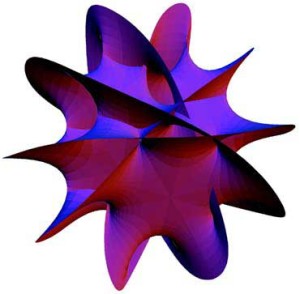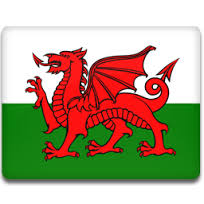When we think of Celts, at least in the US, many tend to think primarily of the Irish. While 1 in 7 Americans (46 Million) has some Celtic background – including my children, but obviously not from me – most of them are Irish (36 Millions) or Scottish (6 Million). Cornish and Welsh make up the balance with roughly 2 M apiece (I have no clue about Bretons, who I think migrated primarily to Canada). So why did I swim against the Irish tide and choose Welsh for the primary ethnicity and magical language in Misaligned: The Celtic Connection?
It’s a fair question, and one worth delving into a bit – at least I think so. As I’ve said several times the Misaligned series started in answer to a question. What happens at the intersection of String Theory and Arthurian legend?
 I like String Theory’s eleven dimensional universe and thought it would be an interesting way to underpin a mythology. I use it as the mechanism to introduce the fantasy elements of the story without just calling it magic. It’s not that I dislike magic, I just wanted something different and the thought of using science appealed to me (and helped answer the question). Having decided that, tying it to Arthur seemed pretty straight forward. I figured I’d use the standard Arthurian legend we all know and love, but with two twists. String Theory was the first and the second was replacing the Arthur character with a girl. So I dutifully started to write, but quickly decided that it still wasn’t different enough from the standard legend, which has been done more times than I can count, by writers with much more skill than me. While that’s a true testament to its appeal, it also suggests an overworked theme. I wanted to write something fresh, but without losing the familiar Arthurian hook.
I like String Theory’s eleven dimensional universe and thought it would be an interesting way to underpin a mythology. I use it as the mechanism to introduce the fantasy elements of the story without just calling it magic. It’s not that I dislike magic, I just wanted something different and the thought of using science appealed to me (and helped answer the question). Having decided that, tying it to Arthur seemed pretty straight forward. I figured I’d use the standard Arthurian legend we all know and love, but with two twists. String Theory was the first and the second was replacing the Arthur character with a girl. So I dutifully started to write, but quickly decided that it still wasn’t different enough from the standard legend, which has been done more times than I can count, by writers with much more skill than me. While that’s a true testament to its appeal, it also suggests an overworked theme. I wanted to write something fresh, but without losing the familiar Arthurian hook.
In hopes of finding an answer to this fresh but familiar dilemma, I dove into research on the origins of the Arthurian legend. I’d always known that they predated Tennyson’s tale, but I never knew just how many revisions they’d undergone (see below for the highlights).
 I waded through as much of it as I could, until I found the Welsh origins of the myth. The source material was written poetry, which reminded me of the Illiad. As much as I liked it, I didn’t want to (nor could I really) just repeat it. Instead, I mined it for names and some of the characteristics of the characters. To keep the familiarity – or perhaps just showing my own biases – I kept some of the familiar elements. In my take, Arthur works with the last druid and a partner from the 7th dimension, who’s trapped in a raven’s body. The druid and raven use the latter’s extra-dimensional powers to travel through time helping various ‘Arthurs’ defend our universe from higher-dimensional threats. In Misaligned: The Celtic Connection and its sequels, the ‘Arthur’ is Penny Preston, an eighth grade girl in upstate New York.
I waded through as much of it as I could, until I found the Welsh origins of the myth. The source material was written poetry, which reminded me of the Illiad. As much as I liked it, I didn’t want to (nor could I really) just repeat it. Instead, I mined it for names and some of the characteristics of the characters. To keep the familiarity – or perhaps just showing my own biases – I kept some of the familiar elements. In my take, Arthur works with the last druid and a partner from the 7th dimension, who’s trapped in a raven’s body. The druid and raven use the latter’s extra-dimensional powers to travel through time helping various ‘Arthurs’ defend our universe from higher-dimensional threats. In Misaligned: The Celtic Connection and its sequels, the ‘Arthur’ is Penny Preston, an eighth grade girl in upstate New York.
Use of Welsh created some problems. For starters, I don’t speak Welsh, but I got over that with a translator. I also lucked into a great editor (Rosanne Catalano) who not only had a working knowledge of Welsh, but also specialized in children’s/YA fantasy. Did my take on one of the most popular stories in western literature work? I’ll leave that for you to decide.
Here’s a list of the major contributors to the Arthurian legend:
~600 Y Gododdin a Welsh oral epic, oldest copy dates to 11th century
~828 Historia Brittonum, oldest copy dates to 12th century mentions Arthur, Merlin, & Mordred
~1138 Geoffrey of Monmouth’s Historia Regum Britanniae, popular version, many surviving copies, exerts major influence of medieval adaptations
1155-1230, the legend takes on romantic (Lancelot added) and Christian (Grail quest added) themes, Chretien de Troyes et al primarily in France, less focus on Arthur, popularity of tales fades through late medieval period
19th Century revival of Arthurian legend led by Alfred Lord Tennyson’s Idylls of the King in 1859, an allegory for the failure of even an ideal man in our imperfect world, leads to numerous 20th century updates, e.g., T. H. White’s The Once and Future King (1958)
Thanks for reading.
Armen
Please visit the Misaligned section of my website for more information about the Misaligned series.
Links to Welsh Origins of King Arthur:
Caerleon History covering the origins of the legend.
Y Gododdin original Welsh and with English translation.


I’ve often wondered what Britain would have looked like had things gone differently. The String Theory gives me the scientific framework to indulge in this.
WHAT IF a Brythonic Reconquista occurred under Arthur or his successors in the 6th century? Or …. More precisely, under Maelgwn the Great of Gwynedd?
For comparison, the Visigoth Kingdom comprised nearly all of Iberia and Aquitania before the Umayyad Conquest of Hispania (between 711-788). After the Conquest, the successor Christian Visigoth kingdoms of Asturias, Leon, and Pamplona were relegated to the remaining extreme mountainous 10% or so of Iberia. Over the course of 300 years, the remaining successor Christian states reconquered the lost lands, all but Granada, which held out until 1492. This is where the Brythonic Welsh found themselves under Maelgwn the Great in the 6th century.
If we apply a similar experience for the Britons, we might observe the Saxon conquest of Roman Britannia, reaching their traditional borders in the 7th or 8th century when Offa’s Dyke was constructed. But from this point, in our alternate String Theory Dimension, the Brythonic Welsh were able to reverse this trend, and reconquer (what is the correct Welsh here, concwest eto or ailoresgyniad?). MAYBE the Anglo-Saxons of Anglia hold off for 700 years?
So by the early modern era you may still have three or four kingdoms (Britain (modern England and Wales), Caledonia/Pictland/Scotland, and the Anglo-Saxon kingdom of Anglia) but the island would have a more Welsh character, rather than “English.”
This is an alternate dimension that Dr Who has not visited yet.
But even with this, I am unsure that the rest of history would have been much different. I think whichever culture controlled the lowlands of Britain would exert a real hegemony over the rest of the British Isles, whether that is defined as absolute conquest or commercial in nature.
http://en.wikipedia.org/wiki/File:Britain.circa.540.jpg
David, thanks for putting so much thought into your comment and even including a great map! The sequel strays a bit further from Wales, once you engage a little writer’s license it’s hard to contain, but it does include more the Boudica’s fight against the Romans. Her initial success stems from the Druids summoning aid from outside our dimension. She only loses b/c she repents the price the aid extracts. The summoned creature has an affinity for fire. It creates the great fires of Rome, Amsterdam and London before landing in upstate NY. Not to share too much :).